#ISO Document Management Software
Explore tagged Tumblr posts
Text
Methodology for Implementing ISO Document Management Software to Support ISO
In the contemporary corporate landscape, adherence to International Organization for Standardization (ISO) norms is not merely beneficial; it is imperative for ensuring quality and uniformity across operations. To manage the extensive documentation required by ISO protocols effectively, organizations increasingly rely on ISO document management software. This technology not only organizes and secures documents but also ensures they are readily accessible and current, thus aiding compliance with ISO standards. This article delves into a structured approach for the deployment of a document management system that effectively supports ISO standards.
Analyzing ISO Compliance Requirements
The initial step in deploying a document management system is to precisely understand the ISO standards applicable to your organization. This could range from ISO 9001 for quality management to ISO 27001 for information security, among others. Each standard mandates specific documentation practices. Start by conducting a comprehensive audit of your existing processes and documentation to pinpoint discrepancies and assess document management needs. This foundational assessment ensures the chosen ISO document management software aligns with your unique requirements.
Selecting Appropriate ISO Document Management Software
The selection of suitable software is pivotal. Effective ISO document management software should possess advanced features that facilitate compliance, such as comprehensive audit trails, stringent access controls, and sophisticated document lifecycle management capabilities. It should also integrate effortlessly with your existing systems to ensure operational continuity. Opt for vendors who offer customizable solutions that can be tailored to your business processes and ISO demands. Assess various options through demonstrations and trial periods to identify the software that best fits your organizational needs.
System Planning and Design
Upon selecting the appropriate software, focus shifts to planning and designing the system to align with your organizational structure and workflows. This stage involves delineating document management processes in accordance with ISO standards, encompassing document creation, review, approval, and retention. Engaging with departmental leaders and IT personnel is critical to ensure that the system design comprehensively addresses all operational aspects and that document workflows are optimized for both efficiency and compliance.
Implementation and System Integration
The implementation phase involves installing the software, configuring it to meet specific organizational and ISO requirements, and integrating it with other existing systems. This stage demands acute attention to data security, user access management, and system compatibility. Conduct comprehensive training sessions for all users to ensure they are proficient in utilizing the new system. The objective is to facilitate a seamless transition that minimizes disruption to ongoing operations.
Ongoing Monitoring and Refinement
Once operational, it is crucial to continuously monitor the system to ensure it maintains ISO compliance and supports effective document management. Regular audits and assessments should be conducted to evaluate system performance and adherence to compliance standards. Soliciting user feedback is invaluable for identifying areas for improvement and additional training opportunities. As ISO standards evolve and organizational processes change, the document management system should similarly be updated and refined to sustain compliance and operational efficacy.
Conclusion
Implementing ISO document management software is a strategic initiative that significantly enhances an organization's capability to comply with ISO standards, while simultaneously improving document control and accessibility. The methodology outlined—from comprehending your specific ISO requirements to ongoing system refinement—offers a comprehensive framework for integrating an efficient document management system into your business practices. As adherence to ISO standards remains integral to quality and regulatory frameworks, robust document management software becomes essential for any organization committed to maintaining compliance and competitive edge. By adhering to this systematic approach, organizations can achieve improved control, compliance, and operational efficiency in their document management practices.
0 notes
Text

05.09.24
Linux laptop project 2024.
I decided to upgrade my old laptop by making it a Linux dual boot system. I had never done this before. I downloaded the ISO files for Linux Mint 22 'Wilma' and Ubuntu 24.04.1 'Noble Numbat' LTS.
The selected files include the standard desktop environments for each, Cinnamon, for Linux Mint and GNOME for Ubuntu.
Then using the built in USB disk creator on Linux Mint, I created bootable USBs, one for Linux Mint and one for Ubuntu. I decided to install Linux Mint first. The installation includes creating partitions and I used the installation partition creator to create a 25 Giga-byte partition in which I installed Linux Mint. The installation went ahead smoothly, and when it completed, I booted up Linux Mint. It looked perfect.
See screenshots below.



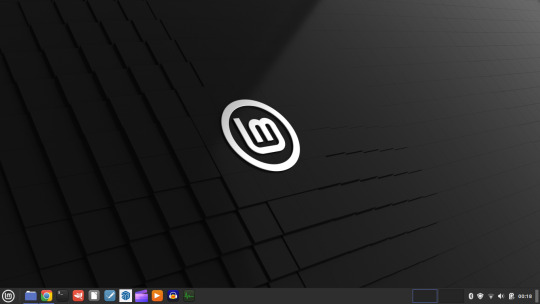

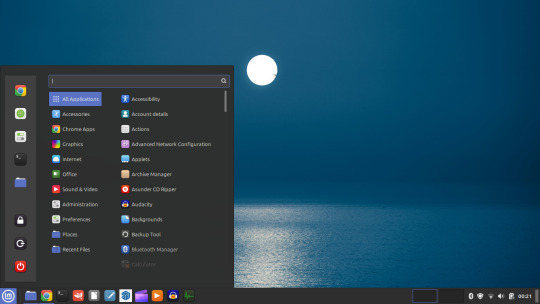
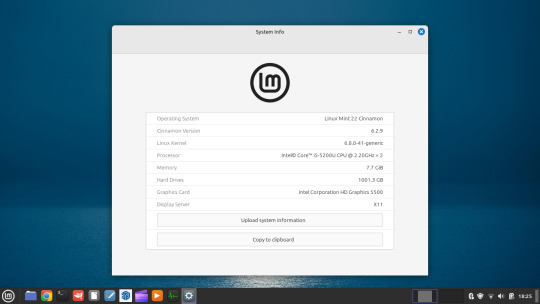





I then installed GParted, which is a more powerful partition manager to create the additional partitions I needed. I created a 25 Giga-byte partition for Ubuntu, two other 25 Giga-byte partitions and I hundred Giga-byte data partition formatting them all using ext4.
I then installed Ubuntu. During the installation, I selected the extended install, rather than the minimal install, so I had a full Ubuntu desktop installation on the second partition on my laptop hard drive. This all went well and at the end of it all I had a system which could boot either Linux Mint or Ubuntu.






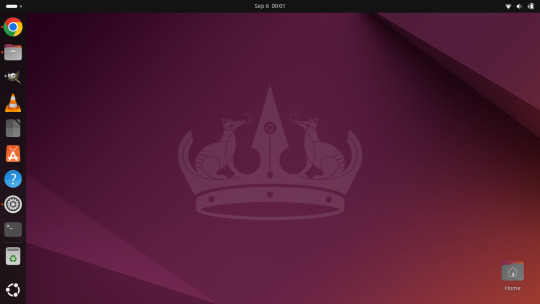
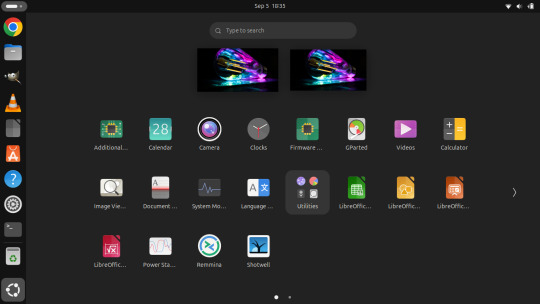

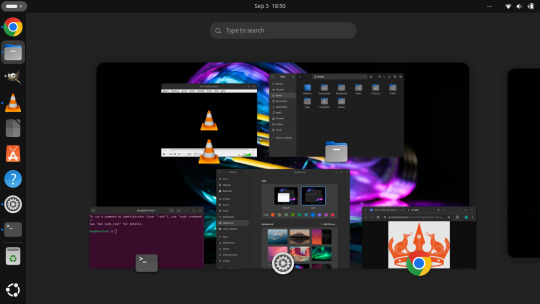
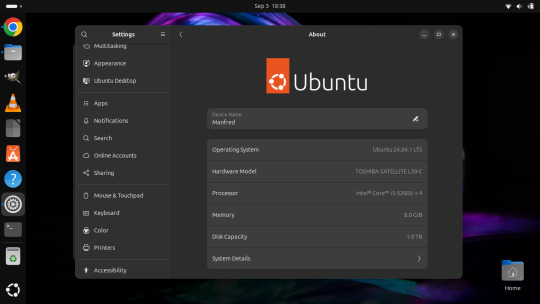
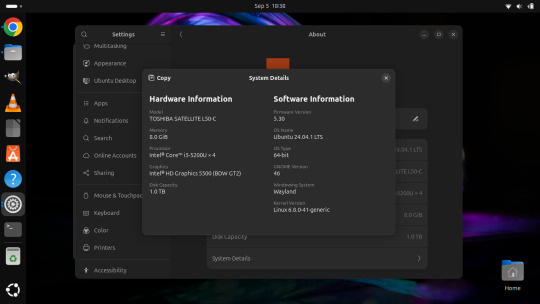
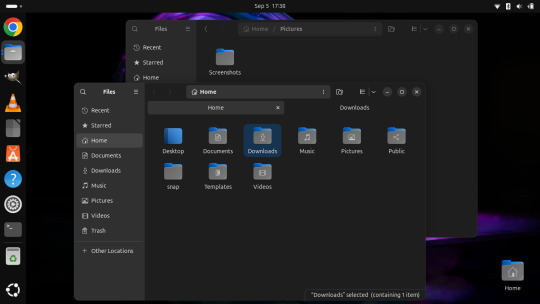
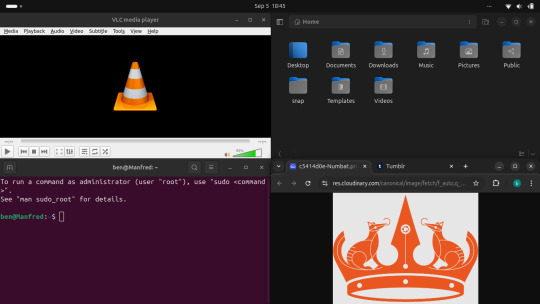
After installation, I booted each system up individually and updated them with the latest updates available, and then I installed necessary software that I wanted such as the Google Chrome Browser, Audacity, VLC Media Player, GIMP, Asunder CD ripper.
I also reinstalled the Chrome web apps for Microsoft Clipchamp and Trimble SketchUp web.
The majority of software bundled on these Linux distros is already preinstalled. I then had fun tweaking each install and making them look how I wanted.
Here is a list of some of the tasks I did in both installs:
- configuring the desktop environment to my liking, e.g. background, theme colour, dark theme (Ubuntu) mixed colour scheme (Mint). - added Bluetooth devices (headphones, Mini-Rig speaker) - added the printer device - dual booted into each one to check them out!
-
After this, Dad wanted to finish the set-up in such a way that I could link my local laptop Documents, Downloads, Pictures, Music and Video folders directly to the data partition, which would mean that I could access those folders automatically from any installed Linux distributions, however this didn't quite go to plan and messed some things up, so we decided to re-install both operating systems again and I repeated all the previous steps and left out the folder sharing part for now.
-
The images underneath show the final desktop installs with my various theme and desktop personalisation's applied and all the installed apps.


Here is a screenshot of the 'GNOME image viewer' in Mint and Ubuntu.

Ubuntu Linux is celebrating its 20th anniversary with a web post.
See link below:
https://ubuntu.com/20years
For more information about the Linux laptop project, search 'Linux' on my Tumblr blog!
6 notes
·
View notes
Text

Implement BIM Execution Plan For Construction Project Success
A BIM Execution Plan (BEP) is a document that outlines how a BIM project implementation will be executed, managed, and delivered. It is an essential tool for ensuring that all stakeholders are on the same page from the start of the project and that everyone understands their roles and responsibilities.
Our Comprehensive BIM Execution Plan (BEP) is your roadmap to achieving successful Building Information Modeling (BIM) implementation. This meticulously crafted plan outlines the strategy, standards, and protocols for your BIM project, ensuring seamless collaboration, data accuracy, and project efficiency.
At, TopBIM we prioritize ISO BIM standards so that our clients’ projects stay in compatibility with different software solutions. Visit our website to learn more about how we can help you with your projects.
2 notes
·
View notes
Text
Top 10 ERP Software for Engineering Industry
In the contemporary and dynamic commercial environment, the engineering sector in India is confronted with a diverse range of obstacles, including intense competition, increasing client expectations, intricate project administration, and resource allocation optimisation. In the contemporary era of technology, the utilisation of Enterprise Resource Planning (ERP) software has become an essential and irreplaceable instrument for engineering firms aiming to optimise their operational processes, improve productivity, and foster long-term and sustainable expansion. Boost your engineering company's efficiency with cutting-edge ERP software – STERP software offered by STERP (Shanti Technology) – one of the most trusted firms offering ERP software for engineering companies in Mumbai. Take the first step towards success today with STERP!
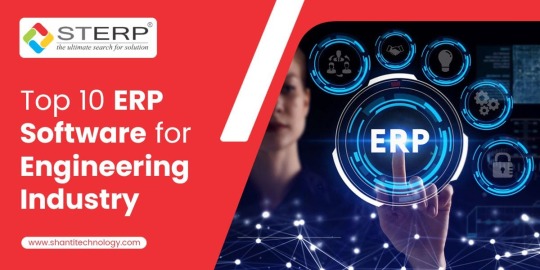
This blog article offers a comprehensive examination of the ten leading enterprise resource planning (ERP) software packages specifically designed to cater to the distinct requirements of the engineering sector in India. The aim is to assist organisations in making well-informed choices that will contribute to their future success.
· STERP Software:
STERP Software is a cutting-edge ERP solution offering an array of features to streamline business operations. It excels in location tracking, task management, and mobile user visit reports. Additionally, it enables seamless tracking of finished goods progress and efficient document management. ISO audit reports and vendor ratings ensure compliance and supplier assessment. The dynamic dashboard provides real-time insights, while multi-currency support facilitates global transactions.
The export documents feature simplifies international trade, and auto-email & SMS integration enhances communication. Quotation lost analysis ratio aids in optimizing sales strategies. Depreciation calculation and auto JV streamline accounting. Moreover, it's Android & iOS mobile app enables easy on-the-go access, including component process tracking.
· Tally.ERP 9:
Tally.ERP 9 is a highly renowned and extensively utilised enterprise resource planning (ERP) software in India, serving a diverse range of businesses, including engineering enterprises, irrespective of their scale or magnitude. Tally.ERP 9 offers comprehensive financial management, inventory control, and taxation modules that enable engineering organisations to adhere to Indian accounting rules and effectively handle financial data management.
· Oracle NetSuite:
Oracle NetSuite is a cloud-based enterprise resource planning (ERP) software that offers a cohesive platform, encompassing ERP, customer relationship management (CRM), and electronic commerce (eCommerce) capabilities. The software's adaptability and capacity to accommodate the needs of engineering businesses of varying sizes in India allow for the optimisation of operations and the acquisition of significant knowledge regarding their business procedures.
· Microsoft Dynamics 365 ERP:
Microsoft Dynamics 365 is a multifaceted enterprise resource planning (ERP) solution that encompasses several functionalities like financial management, supply chain operations, and project accounting. By incorporating localization capabilities specifically designed for India, the software enables engineering organisations to effectively streamline their processes, adhere to regulatory standards, and improve overall client satisfaction.
· Ramco ERP:
The Ramco ERP system has been specifically developed to cater to the distinct needs and demands of the engineering sector within the Indian market. The inclusion of modules pertaining to project management, asset management, and production planning facilitates the attainment of operational excellence and the stimulation of growth within engineering enterprises.
Empower your engineering firm with advanced ERP tools offered by STERP – one of the renowned ERP solution providers in Mumbai. Get a free consultation to discover how!
· EPPS ERP:
The EPPS ERP is a software solution originating from India that has been specifically designed to cater to the needs of the engineering industry. The EPPS ERP system offers a comprehensive range of modules that encompass several aspects of project management, including project planning, procurement, and quality control. By leveraging these modules, firms can effectively streamline their project management processes while upholding stringent quality standards.
· Marg ERP 9+:
Marg ERP 9+ is widely favoured among small and medium-sized engineering enterprises in India. The programme provides a wide range of capabilities, encompassing inventory management, order processing, and adherence to GST legislation, so facilitating operational efficiency and ensuring compliance with local legal requirements for enterprises.
· Infor CloudSuite Industrial (SyteLine):
Infor CloudSuite Industrial, previously recognised as SyteLine, is a comprehensive enterprise resource planning (ERP) solution that specifically caters to the needs of process manufacturing and job shop industries. Its suitability for engineering firms in India lies in its ability to effectively manage different production requirements.
· Focus i:
Focus i is an ERP software that has been designed in India specifically to address the distinct requirements of the engineering industry in the country. Focus i is a software solution that offers several functionalities, including project management, production planning, and HR management. This comprehensive suite of tools enables engineering organisations to enhance their operational efficiency and financial performance.
Optimize your engineering projects and increase profitability. Get ERP solutions offered by top ERP for manufacturing company in Mumbai – STERP (Shanti Technology).
· Reach ERP:
Reach ERP is a nascent participant in the Indian enterprise resource planning (ERP) industry, specifically tailored to cater to the needs of small and medium-sized engineering enterprises. The cloud-based design of this system, in conjunction with its various capabilities such as inventory control, order management, and financial accounting, facilitates efficient operational administration for organisations.
Final Thoughts:
The pursuit of efficiency, innovation, and sustainable growth holds significant importance in India's engineering business. The adoption of digital transformation within the industry has led to the recognition of ERP software as a crucial facilitator. This software plays a significant role in assisting engineering companies in optimising their operations, enhancing the efficient allocation of resources, and ultimately improving customer satisfaction. The aforementioned list comprises the top 10 enterprise resource planning (ERP) software systems that are tailored to address the unique requirements of the engineering sector in India. These software solutions offer a wide range of comprehensive features and functionalities, specifically designed to effectively address the many difficulties and opportunities prevalent in the market.
When making a decision on the choice of an Enterprise Resource Planning (ERP) system, engineering businesses should take into account many variables like scalability, localization capabilities, simplicity of integration, and vendor support. Gain a competitive edge in Mumbai's engineering sector - Implement effective ERP solution offered by STERP (Shanti Technology) – one of the distinct ERP software providers in Mumbai! The use of Enterprise Resource Planning (ERP) technology represents a strategic decision that holds the potential to bring about dramatic changes within the engineering industry in India.
#ERP software for engineering companies in Mumbai#ERP solution providers in Mumbai#ERP for manufacturing company in Mumbai#ERP software providers in Mumbai#ERP software#technology#ERP system#cloud ERP#ERP solutions#manufacturer#engineering#business process#management software#business analytics#engineering industry
5 notes
·
View notes
Text
Why IT Sector Require ISO Consulting Services
Why is there a need for ISO Consulting Services for the Information Technology (IT) Sector?
In today’s competitive and fast-evolving Information Technology (IT) sector, organizations must adhere to globally recognized standards for ensuring operational excellence, security, and client trust.
ISO consulting services help IT organizations to achieve various information and data security standards, such as ISO/IEC 27001:2022 Certification, ISO/IEC 27701:2019 Certification, General Data Protection Regulation (GDPR), and ISO/IEC 42001:2023 Certification. ISO consultants provide expert insights to streamline certification processes and help businesses identify and mitigate risks to improve efficiency.
Information Technology (IT) companies can hire top ISO consultants to understand ISO documentation requirements and implementation to boost market credibility and gain a competitive edge.
Importance of the Information Technology (IT) Sector in the economic growth
The Information Technology (IT) sector significantly contributes to GDP by creating value through technological innovations and services. It also fosters a knowledge-based economy and helps it thrive in the following ways:
➤ Information Technology (IT) sector generates vast job opportunities across various skill levels and reduces unemployment to boost individual income. ➤ Information Technology enables countries as significant global market players to attract foreign investment for cost-effective services. ➤ IT enables automation to promote efficiency and innovation across various industries like healthcare, education, finance, and retail, driving overall economic productivity. ➤ Information technology services and products, especially software development and outsourcing, are major contributors to export earnings and strengthen nations’ economic stability.
List of ISO Consulting Services for the Information Technology (IT)
The Information Technology (IT) sector can understand the documentation requirements and implementation with the help of ISO consultants. Here is the list of ISO Consulting services for the Information Technology (IT) sector; these are as follows: ➢ ISO Consultancy Services for System and Organization Controls (SOC) Certificate ➢ ISO Consultancy Services for IATF 16949 Certificate ➢ ISO Consultancy Services for Capability Maturity Model Integration (CMMI) Certificate ➢ Best ISO Consultancy Services for Vulnerability Assessment and Penetration Testing (VAPT) Certificate ➢ ISO Consulting Services for Health Information Trust Alliance (HITRUST) Certificate ➢ ISO Consultancy for Payment Card Industry Data Security Standard (PCI DSS) Certificate ➢ Top ISO Consultancy Services for ISO/IEC 42001:2023 Certification for Artificial Information Management System (AIMS) ➢ ISO Consulting for ISO/IEC 27701:2019 Certification for Privacy Information Management System (PIMS) ➢ ISO Consultancy for the General Data Protection Regulation (GDPR) Certificate Best ISO Consulting Services for ISO/IEC 27001:2022 Certification for Information Security, Cybersecurity and Privacy Protection — Information Security Management System (ISMS)
Benefits of hiring ISO Consultants for getting ISO Consultancy services for the Information Technology (IT) Sector
Hiring ISO consultants for the IT sector offers multiple benefits, particularly when seeking ISO consultancy services.
ISO consultants bring expertise and deep knowledge of ISO standards critical for IT organizations. Their guidance ensures compliance with global standards and enhances the organization’s credibility and reputation.
ISO consulting professionals help streamline processes to identify gaps in current systems and implement best practices, thereby improving operational efficiency.
Expert ISO professionals simplify the certification process by managing documentation, audits, and employee training. Hence, it helps organizations save significant time and effort.
ISO consultants are adept at tailoring solutions to meet specific organizational needs to ensure that the IT organizations adopted standards align with business goals and regulatory requirements.
Best consultants provide customized services to improve risk management and safeguard sensitive data to reduce the likelihood of security breaches.
Achieving ISO certification through expert consultants can open new business opportunities, as many clients and partners prefer or mandate dealing with certified companies.
ISO consulting services boost employee confidence by knowing their organization adheres to recognized global standards.
Hence, ISO consultants provide cost-effective and efficient pathways to various certifications to foster trust by improving performance and driving growth in the competitive Information Technology (IT) sector.
Conclusion
ISO consulting services are essential for the Information Technology (IT) sector to ensure compliance with global standards, enhance operational efficiency, and bolster security. These services enable IT organizations to streamline certification processes to manage risks and align practices with business goals and regulatory requirements.
Additionally, ISO consultants help IT companies safeguard sensitive data to improve employee confidence and contribute to economic growth by driving innovation and operational excellence in a highly competitive global landscape.
0 notes
Text
From Specs to Global Success: How Technical Translation Services Power Innovation in 2025

In 2025, industries are innovating at lightning speed—developing hardware, software, machines, and infrastructure that transcend geography. But no matter how advanced the technology, one barrier can stall it: language. A misinterpreted safety manual, a poorly localized engineering spec, or an instruction sheet that confuses instead of informs—these are not small errors. They are project killers.
This is why technical translation services are now essential to modern industry. They transform complex documentation into precise, user-ready content in multiple languages, ensuring that your product, platform, or process works seamlessly worldwide.
Unlike general translation, technical translation requires absolute clarity. Whether it's a CAD drawing, a mechanical maintenance guide, or a software user manual, the documents involved are full of jargon, diagrams, units of measure, and often subject to safety regulations. Translators must not only understand the target language, but also the science, mechanics, or engineering behind the content.
Who Needs Technical Translation?
A wide range of industries rely on it daily:
Automotive & Aerospace: Manuals, engineering designs, and compliance documents
Energy & Mining: Safety data sheets, drilling protocols, and environmental impact assessments
IT & Software: UI/UX strings, installation guides, and white papers
Manufacturing: Assembly instructions, patent filings, and quality control protocols
Telecom & Electronics: Configuration guides, product datasheets, and diagnostics
Each of these sectors has region-specific terms, safety standards, and technical regulations—making precision critical.
What Makes Technical Document Translation So Challenging?
Use of domain-specific terminology
Presence of charts, tables, graphs, and symbols
Cross-unit and metric system conversions
Industry certifications and regulatory references
High stakes: an incorrect translation can lead to user injury or financial loss
To manage this complexity, a reliable technical translation company employs engineers, technical writers, and linguists with advanced domain knowledge. According to TechTarget, 71% of B2B technical buyers expect localized documentation, even before they make a purchase decision.
Technology in Technical Translation
Modern providers use tools like:
Translation Memory (TM) for consistency
Computer-Assisted Translation (CAT) tools such as SDL Trados or MemoQ
Terminology Management Systems to maintain precision across languages
Localization Engineering for document layout, code strings, and software UI adaptation
These innovations not only reduce cost and time but ensure quality in repeated projects. At the core, though, human expertise is indispensable—especially for technical document translation services, where tone, formatting, and diagrams must remain intact across versions.
The Legal and Safety Element
Translated technical content often becomes part of a legal contract or safety compliance. An error in a translated Material Safety Data Sheet (MSDS), for example, could violate environmental regulations. That’s why ISO 17100-certified processes and QA reviews are standard practice for industry leaders.
Partnering with a professional technical translation services provider gives companies peace of mind that their products will be well-received, well-understood, and safe to use—no matter the language.
Conclusion: Words That Build the Future
Engineering, IT, energy—these fields shape the physical and digital world. But their power depends on communication that’s as precise as the systems they build. In 2025, translating technical knowledge isn't optional. It’s a cornerstone of global commerce and compliance.
Choose a technical translation company that blends linguistic precision with deep domain expertise. That’s how innovation crosses borders.
0 notes
Text
Enhancing Data Security with ISO 27001 Certification in Ethiopia and Successful Implementation of CMMI Certification in Ethiopia
In today's digital world, data security and process maturity are crucial for organizations operating in both public and private sectors. In Ethiopia, as businesses increasingly adopt digital platforms and IT infrastructure, ensuring robust information security and consistent process improvement has become a top priority. Two key international standards—ISO 27001 and CMMI—are playing a pivotal role in helping Ethiopian organizations achieve these objectives.
Enhancing Data Security with ISO 27001 Certification in Ethiopia
ISO/IEC 27001 is the globally recognized standard for information security management systems (ISMS). It helps organizations manage and protect their information assets by implementing a risk-based approach.
Benefits of ISO 27001 for Ethiopian Businesses:
Enhanced Trust and Credibility: With cyber threats on the rise, ISO 27001 certification demonstrates a commitment to protecting customer and stakeholder data.
Regulatory Compliance: Helps organizations align with national and international data protection regulations, reducing the risk of legal penalties.
Risk Mitigation: Identifies potential vulnerabilities in information systems and provides a framework to mitigate them.
Competitive Advantage: ISO 27001-certified companies often win more contracts, especially when working with government or international clients.
Key Sectors Benefiting in Ethiopia:
Financial Services: Banks and microfinance institutions secure customer data and ensure transaction integrity.
Healthcare: Hospitals and clinics protect patient records and comply with data protection laws.
Telecommunications & IT: Ensures the security of large-scale customer and operational data.
Successful Implementation of CMMI Certification in Ethiopia
CMMI (Capability Maturity Model Integration) is a process-level improvement training and appraisal program. It helps organizations improve performance by providing a structured framework for process development and refinement.
Why CMMI Matters in Ethiopia:
Software and IT Services: As Ethiopia becomes a growing hub for software development, CMMI helps teams streamline operations, reduce defects, and deliver high-quality products.
Government Projects: Public sector entities involved in digital transformation projects benefit from CMMI's structured approach to process improvement.
Outsourcing & BPO: Enhances credibility for Ethiopian firms looking to work with global clients by proving process maturity.
Levels of CMMI:
Level 2 – Managed: Basic project management processes are established.
Level 3 – Defined: Processes are well-documented and standardized.
Level 5 – Optimizing: Focus is on continuous process improvement.
Integration of ISO 27001 and CMMI: A Powerful Combination
Many organizations in Ethiopia are choosing to implement both ISO 27001 and CMMI to enhance security and efficiency simultaneously.
Benefits of Integration:
Holistic Improvement: While ISO 27001 focuses on information security, CMMI improves process performance—creating a more resilient organization.
Improved Project Outcomes: Secure and efficient processes lead to better project execution and higher customer satisfaction.
Cost Efficiency: Shared documentation and audit efforts reduce the cost and complexity of managing two systems.
Success Stories from Ethiopia
Tech Firms in Addis Ababa: Several startups and IT service providers have gained recognition through ISO 27001 and CMMI Level 3 certification, helping them secure international contracts.
Government Initiatives: Public sector IT agencies are adopting ISO 27001 to protect citizen data, and CMMI to manage large-scale digital transformation programs.
Conclusion
For organizations in Ethiopia aiming to secure their data and improve operational excellence, ISO 27001 and CMMI certifications in Ethiopia are not just optional—they are strategic tools. As the country embraces digital transformation, investing in these internationally recognized standards will be key to building a trusted, efficient, and competitive business environment.
0 notes
Text
Achieve Global Standards with Advanced ISO Certifications in Kolkata – Road Safety, Continuity & Quality
In a dynamic and risk-sensitive business environment, organizations in Kolkata are increasingly adopting international standards to ensure operational resilience, public safety, and consistent service delivery. Whether you're in transportation, manufacturing, IT, or public services, choosing the right ISO certification is key to your growth and reputation.
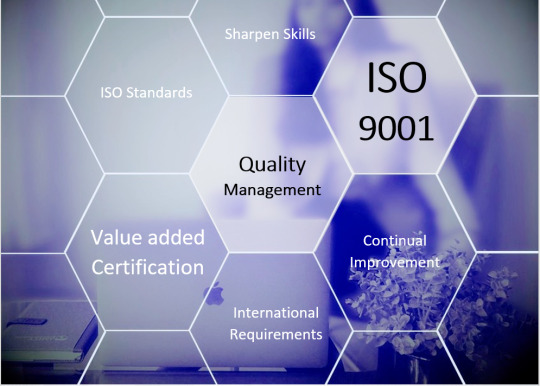
At Zetcon Technologies, we offer expert consulting and complete implementation support for ISO 39001 road traffic safety certification Kolkata, ISO 22301 business continuity certification Kolkata, and ISO 9001 certification services Kolkata.
ISO 39001 Road Traffic Safety Certification Kolkata – For Safer Mobility
ISO 39001 is the global standard for Road Traffic Safety Management Systems (RTSMS), designed to help reduce road accidents and improve transport safety. It is ideal for logistics companies, cab services, public transport providers, and infrastructure developers operating in Kolkata and other urban areas.
Benefits of ISO 39001 certification in Kolkata:
Reduces road incidents, injuries, and fatalities
Enhances fleet management and driver accountability
Ensures compliance with India’s road safety norms
Builds public and regulatory trust
Supports ESG and CSR goals
We help you develop a structured road safety management system, including route risk analysis, driver behavior monitoring, and emergency protocols.
ISO 22301 Business Continuity Certification Kolkata – Stay Operational in Any Crisis
Disruptions like pandemics, cyberattacks, and natural disasters can paralyze businesses. ISO 22301 helps you create a Business Continuity Management System (BCMS) to ensure resilience and recovery across your critical operations.
Why Kolkata businesses need ISO 22301:
Enables fast recovery during unforeseen disruptions
Ensures uninterrupted service to clients and partners
Reduces financial and reputational loss
Mandatory for banks, data centers, and public utilities
Recognized by global and Indian regulators
Our services include business impact analysis (BIA), risk assessments, continuity planning, training, and certification coordination.
ISO 9001 Certification Services Kolkata – Your Gateway to Quality Excellence
ISO 9001 is the most widely adopted standard for Quality Management Systems (QMS). Whether you're a manufacturer in Howrah, a software firm in Sector V, or a healthcare provider in South Kolkata, ISO 9001 certification services Kolkata help you standardize operations and increase customer trust.
Benefits of ISO 9001:
Streamlined processes and reduced wastage
Improved customer satisfaction and retention
Eligibility for government and private tenders
Better internal communication and accountability
Stronger supplier and stakeholder relationships
Zetcon Technologies provides full-cycle ISO 9001 consulting—from gap analysis and documentation to internal audits and certification.
Why Choose Zetcon Technologies?
✅ ISO-certified professionals with domain-specific expertise ✅ End-to-end services, from planning to certification ✅ Affordable pricing packages for SMEs and enterprises ✅ Accredited certification body tie-ups ✅ Local presence in Kolkata with multilingual support (English, Hindi, Bengali)
We’re not just consultants—we’re your compliance growth partners.
Get Certified Today with Confidence
Ready to make your organization more resilient, efficient, and trustworthy? Contact Zetcon Technologies for ISO 39001 road traffic safety certification Kolkata, ISO 22301 business continuity certification Kolkata, and ISO 9001 certification services Kolkata.
📞 Call now or visit https://www.zetcontechnologies.com to schedule your free consultation.
Zetcon Technologies – Driving Safety, Continuity, and Quality Through ISO Excellence.
0 notes
Text
How Companies Can Reduce E-Waste Through IT Lifecycle Management

As the pace of digital innovation accelerates, businesses across India are investing heavily in technology. But with every upgrade comes a consequence: the rapid generation of electronic waste. To combat this growing challenge, companies are turning to IT lifecycle management as a strategic way to reduce e-waste and drive sustainable operations.
Implementing a complete lifecycle approach to IT assets from procurement to disposal allows businesses to minimize waste, maximize value, and meet both compliance and sustainability goals.
What Is IT Lifecycle Management?
IT lifecycle management (ITLM) refers to the strategic planning, acquisition, use, maintenance, and disposal of IT assets such as computers, servers, mobile devices, and networking equipment. By managing assets efficiently at every stage, companies can extend their lifespan, reduce costs, and minimize e-waste generation.
Smarter Procurement = Less Waste
E-waste reduction begins before a device is even purchased. Companies can adopt green procurement policies, choosing hardware with longer life cycles, energy-efficient certifications, and upgradeable components.
By working with certified IT recycling companies and e-waste solution providers, businesses can plan for the end-of-life stage right from the start, reducing environmental impact and ensuring proper electronic waste disposal.
Regular Maintenance and Upgrades
Instead of replacing equipment prematurely, companies can extend asset life through regular maintenance, part replacement, and software upgrades. This approach slows down the rate at which hardware becomes obsolete.
Engaging with an IT disposal company that provides asset tracking and refurbishment services helps maintain performance while keeping electronics in use longer a key practice in sustainable e-waste management.
Responsible IT Asset Disposition (ITAD)
Once IT equipment reaches the end of its useful life, secure and certified disposal is critical. This is where IT asset disposition (ITAD) plays a vital role.
Certified partners follow global standards like NIST 800-88 and DoD 5220.22-M for secure data wiping, ensuring all sensitive business data is completely destroyed. They also provide audit trails, certificates of destruction, and e-waste certificates to keep your business compliant with ISO 27001, GDPR, and CPCB regulations.
Enable Asset Reuse and Refurbishment
Not all end-of-life assets need to be scrapped. Devices that are still functional can be refurbished, resold, or donated. This helps recover value, reduce procurement costs, and significantly lower the amount of electronic waste.
Partnering with a trusted technology recycling company helps streamline refurbishment and resale while ensuring proper reporting and documentation.
EPR and Legal Compliance
India's E-Waste Management Rules require businesses to dispose of their e-waste responsibly. Working with a CPCB-authorized e-waste company near me that provides Pan India services ensures full compliance under Extended Producer Responsibility (EPR).
This not only helps avoid penalties but also aligns your business with national sustainability goals.
Final Thoughts
Effective IT lifecycle management isn’t just about asset optimization it’s a long-term strategy for reducing your organization's environmental impact. From eco-friendly procurement to secure e-waste disposal, each stage in the lifecycle plays a role in building a greener future.
By partnering with certified providers who offer data destruction, waste control, urban mining, and computer scrap pickup, businesses can align operations with their ESG goals and reduce their e-waste footprint.
For complete IT lifecycle and e-waste management solutions, visit techazar.in
#ITLifecycleManagement#EWasteSolutions#ITAssetDisposition#SecureDataWiping#ElectronicWasteDisposal#TechnologyRecycling#EwasteCompany#GreenIT#SustainableBusiness#CPCBApproved#ISO27001#ITDisposalCompany#UrbanMining#EPRCompliance#Techazar
0 notes
Text
How ISO 27001 Certification in India Helps Businesses Secure Their Data
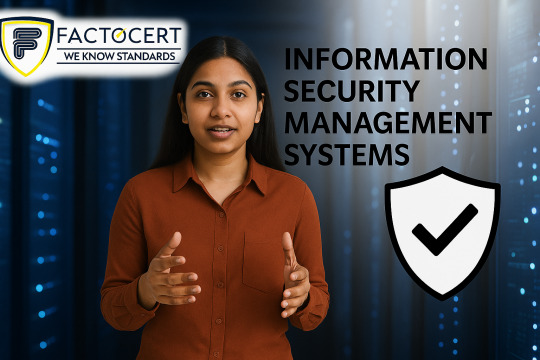
ISO 27001 certification in India modern world of technology, the security of your company’s sensitive data isn’t an option; it’s a necessity. Due to the increasing number of cyber attacks, data breaches, and the growing demands of regulatory authorities, ISO 27001 Certification in India is now a crucial asset for businesses across all sectors.
What is ISO 27001 Certification?
ISO 27001 is an internationally acclaimed Information Security Management System (ISMS) standard developed by the International Organization for Standardization (ISO). It is a methodological procedure for managing sensitive business information, ensuring its security, integrity, and availability.
The standard provides the most effective methods for implementing, maintaining, and constantly expanding an organization’s security framework.
Why is ISO 27001 Important in India?
India is experiencing an exponential increase in the fields of digitization, e-governance technology, and e-commerce. The digital revolution presents an increasing challenge in safeguarding important information. ISO 27001 Certification in India :
Enhances data protection
Builds customer trust
It ensures compliance withwith regulatory requirements (e.g., IT Act, GDPR, etc.).
Organizations take action to address cybersecurity risks
If you’re a start-up in Bangalore or Hyderabad, an IT company based in Hyderabad, or a manufacturing facility in Pune, ISO 27001 Certification in India is essential. ISO 27001 is vital to the resilience of your business.
Benefits of ISO 27001 Certification in India
Security against cyber threats and conformity with legal and regulatory requirements. Improved the business’s continuity and risk management. Competitive advantages in tenders and international markets. Improved stakeholder and customer trust. by Clarifying the roles and responsibilities related to data security.
Who Should Get ISO 27001 Certified?
ISO 27001 Certification in India applies to any type and size of the company , which includes:
IT & Software Companies
Financial Institutions
BPO/KPO Firms
E-commerce Platforms
Healthcare Providers
Educational Institutions
Government & Public Sector Units (PSUs)
Process to Get ISO 27001 Certification in India
This is a step-by-step guide to follow:
Gap Analysis Review the current practices for data security against ISO 27001 Certification in India requirements.
Documentation and Planning – Establish security policies as well as risk assessments and procedures.
Implementation Controls can be deployed to monitor performance and provide instructions to employees.
Internal Audit – Make sure the ISMS is properly implemented.
Management Review: Review the system’s performance and identify any areas for improvement.
Certification Audit Audit conducted by a certified ISO Certification body.
ObtainObtain CertificationCertificationCertificationCertificationCertification After a successful audit and Certification, you will receive the ISO 27001 Certification in India, which, which is issued.
ISO 27001 Cost in India
Its cost for ISO 27001 Certification in India depends on many aspects, including:
Organization size
Scope of the ISMS
The number of locations
Existing security controls
Contact Factocert for a custom estimate according to your business requirements.
Why Choose Factocert for ISO 27001 Certification in India?
With Factocert At Factocert, we ensure that Certification is simple, efficient, and hassle-free. Our experienced consultants provide complete assistance, including:
We provide the best ISO consultants Who are knowledgeable and provide the best solution. And to know how to get ISO certification. Kindly reach us at [email protected]. work according to ISO standards and help organizations implement ISO certification in India with proper documentation.
For more information, visit ISO 27001 Certification in India.
0 notes
Text
📑🔬 Electronic Device History Record (eDHR) Service Market: Powering Compliance in MedTech
In an industry where precision and traceability are everything, the Electronic Device History Record (eDHR) Service Market is quietly transforming how medical devices are tracked, audited, and approved.
📈 Market Overview:
2024: USD 0.28 billion
2025: USD 0.29 billion
2033 (Projected): USD 0.44 billion
CAGR (2025–2033): 💡 5.3% growth
💻 By Type:
Software as a Service (SaaS): Scalable, cloud-based compliance tools
Platform as a Service (PaaS): Integrated ecosystems for medical device management
Other: Customized digital solutions for regulated industries
🏥 By Application:
Class I Medical Device Manufacturers – Simpler devices, strict standards
Class II Manufacturers – Moderate risk, rigorous documentation
Class III Manufacturers – High-risk, life-saving tech that demands impeccable records
🌍 Top Players Leading the Shift:
MasterControl (U.S.)
Siemens (Germany)
L Z Life Sciences (U.S.)
42Q (Sanmina) (U.S.)
QT9 Software (U.S.)
🔒 Why It Matters:
Ensures FDA & ISO compliance
Reduces human error
Streamlines audits
Improves patient safety
Supports digital-first manufacturing for modern MedTech
📎 Ready for the digital evolution in medical manufacturing? 🔗 Dive deeper into the report: Read here
#MedTech#eDHR#MedicalDeviceCompliance#DigitalManufacturing#SaaS#PaaS#HealthcareInnovation#MedicalSoftware#TumblrTech#SmartManufacturing#Traceability#RegulatoryTech
0 notes
Text
5 Signs Your Bank Needs Trade Finance Automation

In an era where efficiency, compliance, and customer experience are non-negotiable, traditional trade finance processes often fall short. Manual operations, legacy systems, and siloed workflows hinder productivity, increase risk, and slow down decision-making. If your bank is still relying on outdated methods, it’s time to reconsider your trade finance strategy.
Here are five tell-tale signs your bank needs trade finance automation:
1. Fragmented Customer Experience Today’s corporate clients expect the same seamless experience from their banks as they get from digital-first fintechs. A slow and uncoordinated trade finance process can frustrate customers and drive them to competitors.
Fragmented systems that don’t communicate well create bottlenecks. Clients are forced to chase updates, submit redundant documentation, and wait days for transaction approvals. Trade finance automation integrates front-to-back office functions, offering clients a self-service portal, real-time tracking, and faster decision-making.
2. Lack of Visibility and Real-time Reporting In manual systems, data is scattered across multiple departments and platforms, making it hard to get a single view of performance, risks, or customer behavior. Without real-time dashboards and analytics, decision-making becomes reactive rather than proactive.
Automated trade finance platforms provide centralized dashboards, smart analytics, and real-time insights that help you track trade flows, pending actions, client status, and potential risks—all from a single screen.
3. High Dependency on Manual Processes If your trade finance operations still involve spread sheets, email-based document exchanges, and manual data entry, you're operating at a disadvantage. These methods are not only time-consuming but also prone to human error, duplication, and compliance oversights.
Manual processes increase turnaround time for Letters of Credit (LCs), Bills of Exchange, and Bank Guarantees, resulting in delayed services for customers and operational inefficiencies internally. Automation replaces these outdated workflows with a single system of record, real-time status tracking, and faster processing.
4. Rising Operational Costs Labor-intensive operations, high paper usage, redundant communication, and delays in approval cycles all add to operational costs. In a time when cost-efficiency is critical, automation can be the game-changer.
By streamlining processes, reducing error rates, and increasing throughput, automation cuts costs significantly. It frees up valuable employee time that can be reallocated to higher-value tasks like client servicing or risk assessment.
5. Increasing Regulatory Pressure Regulatory environments are evolving faster than ever, especially with the introduction of frameworks like SWIFT ISO 20022, FATF guidelines, and country-specific trade compliance mandates. Staying compliant through manual monitoring is not just challenging—it’s risky.
Banks that rely on non-digitized compliance checks face challenges in maintaining audit trails, real-time alerts, and timely reporting. Trade finance automation comes with built-in compliance frameworks, auto-validation checks, and rule-based alerts that help mitigate risks and stay audit-ready.

How Kyzer Can Help
Kyzer Software specializes in next-gen trade finance automation tailored for banks and financial institutions. Our flagship product, TradeZone, streamlines the entire trade lifecycle—from LC issuance to compliance checks, document management, and reconciliation—within a unified digital platform.
Here’s how Kyzer empowers banks:
Reduced manual workload: Automate complex trade processes, eliminating repetitive tasks.
Built-in compliance engine: Stay aligned with RBI, FEMA, SWIFT ISO, and global AML regulations.
Omni-channel corporate portal: Enhance customer experience with real-time transaction tracking and digital document upload.
Seamless integration: Plug-and-play compatibility with core banking systems, EDPMS/IDPMS, SWIFT, and NeSL e-BG.
Faster TAT: Accelerate trade processing times, reduce errors, and cut costs.
In a highly competitive banking landscape, staying ahead means rethinking the way you handle trade finance. Automation isn’t just a tech upgrade—it’s a strategic necessity.
Want to future-proof your bank’s trade finance operations? Let Kyzer show you how.
0 notes
Text
Scaling Law Firm Productivity with Cloud-Based IP Docketing Solutions
Scaling Law Firm Productivity with Cloud-Based IP Docketing Solutions
In today’s hyper-competitive legal environment, law firms—especially those handling intellectual property (IP)—face increasing pressure to do more with less. As client expectations evolve, deadlines tighten, and IP portfolios grow more complex, the traditional models of managing IP dockets are no longer sufficient. Cloud-based IP docketing solutions have emerged as a strategic asset, enabling firms to scale their productivity, minimize risk, and improve operational efficiency.
The Limitations of Legacy Docketing
Many firms still rely on legacy software or even manual spreadsheets for docketing, which creates room for human error, inefficiencies, and compliance risks. Missed deadlines can result in lapsed patents or trademarks, reputational damage, and costly litigation. Moreover, these older systems are often siloed, difficult to update, and lack collaboration features essential for modern law practice.
Why Cloud-Based Docketing is a Game-Changer
Cloud-based IP docketing solutions address these issues by offering a centralized, secure, and scalable environment to manage deadlines, documents, and workflows. Here’s how they transform productivity:
Anywhere, Anytime Access: Attorneys, paralegals, and docketing teams can access their dashboards from any device, ensuring timely updates even when working remotely.
Automated Deadline Calculations: Cloud systems automatically calculate due dates based on jurisdictional rules, reducing the chances of human error.
Real-Time Collaboration: Teams can work together more efficiently with shared task lists, alerts, and live updates.
Scalability: As firms grow, cloud platforms easily adapt to handle more users, matters, and jurisdictions—without the need for expensive infrastructure upgrades.
Enhancing Compliance and Security
One of the most critical concerns for law firms is data security. Cloud-based docketing providers prioritize compliance with industry standards such as ISO, GDPR, and SOC 2. They employ encryption, role-based access, and backup protocols to protect sensitive IP data. Moreover, automated audit trails ensure complete transparency and traceability for every action taken.
Cost-Efficiency and ROI
Cloud solutions typically follow a subscription model, eliminating upfront costs for hardware and reducing the burden of IT maintenance. Firms can reinvest those savings into core business areas, such as client service or staff training. The improved efficiency also means that fewer resources are required to manage an increasing workload—translating into measurable productivity gains.
The Future is Integrated
Leading cloud-based IP docketing systems now integrate with patent/trademark office APIs, document management tools, and even billing platforms. This interconnectedness allows for smoother workflows and data consistency across departments. With the rise of AI-powered tools, docketing systems are also beginning to offer intelligent insights, such as deadline prioritization, conflict detection, and resource forecasting.
Final Thoughts
Adopting a cloud-based IP docketing solution is not just a tech upgrade—it’s a strategic decision. For law firms looking to stay competitive, scalable productivity, improved compliance, and enhanced client service are no longer optional. The cloud is no longer the future—it’s the now. Firms that embrace this shift will be best positioned to lead in the evolving legal landscape.
0 notes
Text
iManaged Solutions: Revolutionizing Document and Email Management for Modern Enterprises
In today’s fast-paced digital landscape, efficient document and email management is essential for law firms, corporate legal departments, financial services, and other professional organizations. This is where iManaged solutions come into play—offering intelligent, secure, and scalable document management systems that enhance productivity and compliance.
If your organization is looking to streamline workflow, ensure regulatory compliance, and empower team collaboration, iManaged solutions provided by MacroAgility Inc. offer the expertise and support needed to make it happen.
What Are iManaged Solutions?
iManage is a leading platform that provides document and email management systems built for professionals. With AI-powered features, robust security, and seamless integration with popular tools like Microsoft Office, iManage helps teams access, collaborate on, and secure critical information from anywhere.
iManaged solutions are tailored implementations, support, and optimization services designed to help companies deploy and manage iManage software efficiently.
Key Features of iManaged Solutions
Document & Email Management Organize, store, and retrieve documents and emails in a centralized, searchable platform with version control and collaboration tools.
Security & Compliance Protect sensitive data with advanced security, encryption, audit trails, and compliance with industry standards like HIPAA, GDPR, and ISO 27001.
Smart Workflows Automate routine tasks, improve efficiency, and reduce errors using intelligent workflows and templates customized for your team’s needs.
Cloud or On-Premise Flexibility Choose between cloud-based deployment for mobility and scalability or on-premise solutions for total control over infrastructure.
Integration Capabilities Seamlessly integrates with tools like Microsoft 365, Outlook, Teams, and other case management or financial software to streamline your operations.
Why Choose MacroAgility for iManage Support?
MacroAgility Inc. specializes in helping organizations implement, manage, and support iManage environments. Whether you're migrating from legacy systems or optimizing your current setup, their expert team ensures a smooth transition and ongoing success.
Benefits of choosing MacroAgility include:
Certified iManage professionals
Custom development and integration
24/7 support and troubleshooting
Regular system health checks and updates
Comprehensive user training and documentation
Transform Your Operations with iManaged Solutions
Adopting iManaged solutions means your firm can focus on high-value tasks instead of getting bogged down in administrative inefficiencies. From improved data governance to enhanced collaboration, the impact on your team's productivity and client satisfaction is substantial.
Visit MacroAgility today to explore how their tailored iManaged solutions can help your business unlock the full potential of the iManage platform. Get expert support, future-ready implementation, and a partner you can trust.
For more info visit here:- imanage worksite jobs
0 notes
Text
ISO 13485 Certification: A Comprehensive Guide for Medical Device Manufacturers
Introduction
In the highly regulated and quality-driven world of medical devices, ISO 13485 certification has emerged as a global benchmark for quality management systems. Whether you're a manufacturer, supplier, or service provider in the medical device industry, this certification ensures compliance with international standards and regulatory requirements.
ISO 13485 is not just about ticking boxes—it’s about building a culture of consistent quality, reducing risks, and ensuring patient safety. This article explores everything you need to know about ISO 13485 certification, including its importance, benefits, requirements, implementation process, and how it compares to other standards like ISO 9001.
What is ISO 13485?
ISO 13485 is an international standard that specifies the requirements for a quality management system (QMS) specific to the medical device industry. It was first published in 1996 by the International Organization for Standardization (ISO) and most recently updated in 2016.
Unlike ISO 9001, which is more general, ISO 13485 focuses solely on the safety, design, production, and post-market processes of medical devices. It applies to organizations involved in the design, development, production, installation, and servicing of medical devices and related services.
Why ISO 13485 Certification is Important
1. Regulatory Compliance
ISO 13485 helps organizations meet local and international regulatory requirements. In many countries, it’s mandatory for market access. For example, it is often required for CE marking in Europe and for FDA approval in the United States.
2. Improved Product Safety
By enforcing rigorous quality management practices, ISO 13485 reduces the risks of defects, recalls, and harm to patients.
3. Global Recognition
Being ISO 13485 certified gives your company a competitive edge, boosts reputation, and facilitates international trade.
Who Needs ISO 13485 Certification?
This certification is not limited to device manufacturers. It also applies to:
Component suppliers
Contract manufacturers
Distributors
Sterilization service providers
Software developers (for medical software)
Consultants and auditors
Whether your organization deals with Class I or Class III medical devices, ISO 13485 ensures your processes are designed to consistently meet regulatory and customer requirements.
Key Requirements of ISO 13485
ISO 13485 is structured into eight sections, but the most important ones for implementation are:
1. Quality Management System (QMS)
Establishing a documented QMS that defines processes, responsibilities, and procedures.
2. Management Responsibility
Leadership commitment, quality policy, planning, and periodic review of the system’s performance.
3. Resource Management
Proper allocation of human resources, infrastructure, and work environment to maintain product quality.
4. Product Realization
This includes planning, design and development, purchasing, production, and servicing.
5. Measurement, Analysis, and Improvement
Monitoring and improving processes through internal audits, customer feedback, corrective actions, and preventive actions.
Steps to Achieve ISO 13485 Certification
Step 1: Gap Analysis
Assess your current quality management system against ISO 13485 requirements.
Step 2: Training and Awareness
Train staff and key personnel about ISO 13485 standards and their role in implementation.
Step 3: Develop or Revise Documentation
Create or update quality manuals, procedures, and work instructions.
Step 4: Implement the QMS
Put your documented processes into practice and ensure staff adherence.
Step 5: Internal Audit
Conduct an internal audit to check the effectiveness of your QMS.
Step 6: Management Review
Senior management must review audit results and decide on improvements.
Step 7: Select a Certification Body
Choose an accredited body to perform the external audit and issue the certificate.
Step 8: Undergo Certification Audit
A two-stage audit process where your documents and implementation are assessed.
Step 9: Maintain Certification
Regular surveillance audits are conducted to ensure ongoing compliance.
Benefits of ISO 13485 Certification
1. Market Access
Gain easier entry into international markets by aligning with regulatory frameworks.
2. Risk Management
Identify and mitigate risks in product design, production, and post-market surveillance.
3. Customer Confidence
Demonstrates commitment to quality and patient safety, building trust with healthcare providers and end-users.
4. Operational Efficiency
Standardized processes lead to less waste, fewer errors, and improved productivity.
5. Legal Protection
Helps defend against liability claims by showing compliance with best practices and international norms.
ISO 13485 vs ISO 9001: Key Differences
FeatureISO 13485ISO 9001Industry FocusMedical DevicesAll industriesRegulatory RequirementsEmphasis on compliance and safetyGeneral business improvementRisk ManagementDetailed risk-based approachesBroad risk-based thinkingProduct RealizationMore stringent documentation neededMore flexibility in implementationDesign and DevelopmentMore controls and records requiredFewer mandatory controls
Common Challenges and How to Overcome Them
1. Understanding Complex Requirements
Some companies struggle with the technical language and detailed requirements. Solution: Work with a consultant or attend training workshops.
2. Documentation Overload
ISO 13485 requires extensive documentation. Solution: Use digital QMS platforms to manage documents efficiently.
3. Change Management
Employees may resist new processes. Solution: Provide ongoing training and involve teams early in the implementation.
4. Audit Readiness
Failing audits due to incomplete records or poor process controls. Solution: Conduct mock audits and perform regular reviews.
ISO 13485 Certification Cost
The cost of ISO 13485 certification depends on several factors:
Company size and complexity
Number of sites
Existing QMS maturity
Consulting and training fees
Certification body charges
For small companies, costs may range from $5,000 to $15,000, including implementation and certification fees. For larger organizations, costs can be significantly higher.
Maintaining ISO 13485 Certification
After certification, companies must:
Conduct regular internal audits
Hold annual management reviews
Respond to non-conformities
Prepare for surveillance audits (usually every 12 months)
Failing to maintain compliance may result in the suspension or withdrawal of the certificate.
Future Trends in ISO 13485
1. Digital QMS Integration
More organizations are moving toward cloud-based quality management systems for better traceability and efficiency.
2. Alignment with EU MDR and IVDR
ISO 13485 is increasingly integrated with European Medical Device Regulation for compliance synergy.
3. Focus on Cybersecurity
For software-driven devices, there's growing emphasis on incorporating cybersecurity controls within the QMS.
Conclusion
ISO 13485 certification is a powerful tool for demonstrating your commitment to quality and safety in the medical device industry. It not only fulfills regulatory expectations but also sets the stage for sustainable business growth and global market expansion.
Achieving ISO 13485 is not just a milestone—it’s an ongoing journey of quality improvement, risk mitigation, and operational excellence. With the right preparation, resources, and mindset, your organization can confidently move toward certification and unlock new opportunities in the healthcare market.
iso 13485 certification
0 notes
Text
2D to 3D CAD Conversion Services: How to Choose the Right Provider

In today’s digital design and manufacturing landscape, the demand for 2D to 3D CAD conversion services is at an all-time high. Companies working with legacy blueprints, hand-drawn sketches, or outdated file formats often face difficulties modernizing their design processes. Converting 2D drawings into 3D CAD models opens the door to better visual representation, advanced simulations, seamless manufacturing, and smoother collaboration across engineering teams.
However, while the advantages are clear, choosing the right CAD conversion provider can be a complex decision. Not all providers offer the same level of accuracy, speed, or software compatibility. A small mistake in geometry or tolerancing during the conversion process could lead to expensive reworks, manufacturing defects, or failed prototypes. That’s why it’s critical to evaluate your options carefully before outsourcing this essential task.
Why 2D to 3D CAD Conversion is Critical in 2025
As digital workflows become the norm, industries are rapidly moving away from static 2D files. While 2D CAD drawings can provide basic structural details, they lack the dimensional depth needed for today’s technologies such as 3D printing, CNC machining, digital twin simulation, and AR/VR-based product demos.
With a 3D CAD model, designers and engineers can rotate, dissect, and inspect components from every angle. Assembly instructions can be derived automatically, and simulations can predict stress points or part failures before a prototype is ever built. This reduces both time-to-market and material waste, especially valuable in sectors like automotive, aerospace, consumer electronics, and industrial equipment.
Moreover, many modern design and manufacturing systems require 3D models as standard input. Whether you’re integrating with PLM (Product Lifecycle Management) platforms or handing off models to contract manufacturers, 3D CAD files are far more versatile and production-ready.
What Makes a CAD Conversion Provider Truly Reliable?
One of the first things to look for in a service provider is their technical proficiency with CAD software. Whether your team uses Revit, AutoCAD, SolidWorks, Fusion 360, or CATIA, the provider should be familiar with both your input and desired output file formats. It’s also important they understand not just the software commands, but design logic, how different components interact within an assembly, or how part tolerances affect final performance.
Equally important is the provider’s ability to handle design intent. A reliable CAD expert won’t simply redraw lines in 3D space. Instead, they will interpret the original 2D documentation to understand functional relationships, motion paths, or load-bearing structures, then build accurate 3D models that reflect these engineering realities.
A strong provider will also demonstrate a clear quality control process. This might include model verification, peer reviews, and adherence to dimensioning standards such as ASME Y14.5 or ISO 16792. These checks help ensure that the 3D output is more than just visually correct; it’s geometrically and functionally sound for downstream applications.
Questions to Ask Before Hiring
Vet your CAD provider with these essential questions:
Can you show examples of similar 2D to 3D CAD projects?
What CAD platforms and formats do you support?
How do you ensure model accuracy and compliance?
Do you provide native, editable files?
What’s your process for revisions or edits?
These questions help eliminate guesswork and establish clear expectations upfront.
Benefits of Working with the Right CAD Partner
When you choose a competent and experienced CAD conversion provider, the advantages extend far beyond a single project. You’ll gain a long-term partner who understands your standards, workflows, and engineering priorities. This results in smoother collaboration, reduced onboarding time for new projects, and improved scalability.
Additionally, professional services often offer revision support, integration with cloud collaboration tools, and even documentation for downstream users like machinists or fabricators. These add-ons may not be immediately obvious, but can provide huge value over time.
Final Thoughts: Invest in Precision, Not Just Service
2D to 3D CAD conversion is more than just digitizing old drawings; it's about preserving design intent and preparing files for future-ready manufacturing. The right service provider brings both technical expertise and industry insight, ensuring your project stays on track and within spec.
Take your time to research, ask smart questions, and never compromise on quality.
#2D to 3D CAD conversion#CAD Partner#CAD Conversion Services#Paper to CAD Conversion#PDF to CAD Drawings#CAD Conversion Provider
0 notes